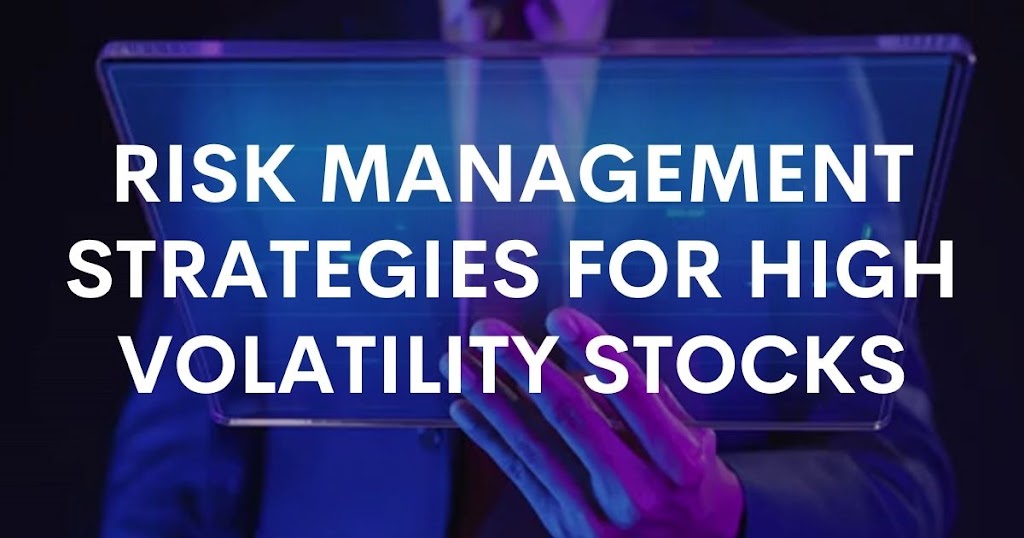Hey do you wants to know about Risk management strategies for high volatility Stocks then you are right place.
Welcome to PrimeRandom in this post I am going to tell you about it in detail and I am 100 percent sure after this no longer you have to search fo this, so let’s get started
Risk management is crucial when dealing with high volatility stocks. These stocks can offer substantial rewards but also present significant risks. Here’s a comprehensive guide:
1. Understanding High Volatility Stocks
– What Are They?
These are stocks that see big ups and downs in their prices. They can change a lot in a short time, which can be risky but also offer chances for more profit.
Also Read :- How To Do Fundamental Analysis Of Stocks
2. Diversification
– Why Diversify?
Putting your money into different kinds of investments. If one goes down, the others might not, which can protect your money.
– How to Diversify?
Mix your investments between different sectors (like technology, healthcare), different regions (like US, Europe, Asia), and different types of investments (stocks, bonds, real estate).
3. Position Sizing
– What Is It?
It’s about how much money you put into each stock. Don’t put too much into one, especially if it’s risky.
– How to Do It?
Decide on a percentage of your total money that you’re okay putting in one stock. For example, no more than 5% of your money in any single high-risk stock.
4. Stop-Loss Orders
– What Are They?
Orders you set up to automatically sell a stock if its price drops to a certain level.
– Why Use Them?
They can help you cut losses if a stock’s price starts falling too much.
5. Using Options for Hedging
– What Does It Mean?
Options are like tools you can use to protect your investments.
– Types of Options
Buying ‘put’ options can help you if a stock’s price falls. Selling ‘covered call’ options can make you some money and offer a bit of protection.
6. Fundamental Analysis
– What Is It?
Looking at a company’s health – how much money it makes, its debts, and its overall value.
– Key Factors: Check if the company makes steady money, isn’t too much in debt, and isn’t priced too high compared to its earnings.
7. Technical Analysis
– What Is It?
Studying stock price charts to predict future movements.
– Key Techniques: Look for patterns or trends in the stock’s price history to guess where it might go next.
8. Sentiment Analysis
– What Does It Mean?
Keeping an eye on what people feel about the market or a stock. News, social media, and investor surveys can show you this.
– How It Helps: It can give you a sense of whether people are optimistic or pessimistic about a stock, which can affect its price.
9. Portfolio Review and Rebalancing
– Why Important?
It’s good to regularly check how your investments are doing and adjust them to stay in line with your risk comfort level.
– How to Do It?
Look over your stocks, see how they’ve done, and decide if you need to buy or sell anything to keep your portfolio balanced.
10. Risk Capital Allocation
– What Is It?
Only using money you can afford to lose for high-risk investments.
– How to Apply?
Decide on an amount of money you’re comfortable risking and stick to that limit.
11. Staying Informed and Flexible
– Why It Matters?
The stock market changes a lot, and staying updated means you can make smarter decisions.
– How to Stay Informed?
Keep up with financial news, market trends, and any big changes in the economy.
12. Emotional Discipline
– Why Is It Key?
Investing can be emotional, but making decisions based on fear or excitement can be risky.
– How to Manage?
Try to make decisions based on research and facts, not just feelings.
13. Long-Term Perspective
– Why It’s Important?
High volatility stocks can go up and down a lot, but sometimes they need time to grow in value.
– How to Keep It?
Focus on your long-term goals and don’t get too worried about short-term losses.
Not managing risks in high volatility stocks leads to:-
1. Capital Loss: The most direct impact is substantial capital loss. High volatility can cause rapid price decreases, leading to significant losses if large positions are held.
2. Emotional Stress: Volatile stocks can lead to an emotional rollercoaster, which can affect decision-making and lead to poor trading choices.
3. Impact on Portfolio Performance: Significant losses in volatile stocks can drag down the overall performance of a diversified portfolio.
4. Liquidity Risk: In extremely volatile situations, especially in less liquid markets, you might not be able to sell your holdings at the desired price.
5. Margin Calls: If you’re trading on margin, a sharp price decline can trigger a margin call, forcing you to sell positions at a loss or add more funds.
6. Opportunity Cost: Money lost in volatile stocks could have been invested elsewhere, generating returns.
7. Long-term Financial Goals: Large losses can have a significant impact on long-term financial goals like retirement savings, requiring more time or higher returns to recover.
Conclusion
Investing in high volatility stocks involves a balance of understanding the risks, diversifying your investments, keeping an eye on the market, and being disciplined in your approach.
It’s not just about the potential for high returns, but also about managing the risk effectively to protect your investment over the long term.
In this article I told you complete information about Risk management strategies for high volatility stocks I hope you like this article, thanks for reading!
